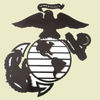9 Things You May Not Know About the Declaration of Independence.
Jul 3, 2019 12:35:14 #
son of witless wrote:
If you read the various pre independence documents of the colonies you will find God mentioned a lot. The Constitution was the first document that I know about where God is left out. In many P**********l speeches God is also mentioned many times. I wonder when those speeches will be erased from the public record ? I am sure none of Obama's speeches will be endangered.
(Lol)
I have read a few, Virginia’s comes immediately to mind. And the separation of church and state is yet another issue today’s liberalism commonly mistakes. The erasure of our history is definitely something to keep an eye on.
Jul 3, 2019 12:38:22 #
Rose42 wrote:
It says its a jpeg. Do you remember where you found it?
A Happy Independence Day to you as well!
A Happy Independence Day to you as well!
Thank you.
Sure do....
https://www.google.com/search?q=american+f**g+gifs&tbm=isch&source=univ&hl=en-us&client=safari&fir=U849glm0mDSuzM%253A%252Cyh7Eb5g_RxbQWM%252C_%253BQNBU2jSauiubuM%253A%252CIPde78Wm521d0M%252C_%253BgXfA_9-OrF8zWM%253A%252CnYpDKVbhAjeLdM%252C_%253BJkE9mAoDFu8GNM%253A%252CLQlFLYASF3j-TM%252C_%253BUhT9Ez5uWGvIAM%253A%252Ck56ycKNigrsBNM%252C_%253BhUOcPLafZYrLaM%253A%252CEr8S1MtTKW7jVM%252C_%253BdTaYXYBpvXnReM%253A%252CIPde78Wm521d0M%252C_%253BUgmCnirPsmtJMM%253A%252Cew2pzKZSPCZJtM%252C_&usg=AI4_-kS9BjCJ4Pu36vnzDDrPf6CiXBuw9A&sa=X&ved=2ahUKEwiU0NfWhZnjAhWHrFkKHTuWDYQQ7Al6BAgIEEU&biw=414&bih=622&dpr=3
Jul 3, 2019 12:41:55 #
The Critical Critic wrote:
Thank you. br br Sure do.... br https://www.goog... (show quote)
Thanks! The 'eagle' in my search was giving me all kinds of weird results.
Jul 3, 2019 12:44:49 #
Rose42 wrote:
Thanks! The 'eagle' in my search was giving me all kinds of weird results.
You’re welcome. When I see it on that link, it’s moving (looks cool too) but when I paste it here it doesn’t...
Jul 4, 2019 09:18:50 #
crazylibertarian
Loc: Florida by way of New York & Rhode Island
The Critical Critic wrote:
b 1. The Declaration of Independence wasn’t signe... (show quote)
Tread carefully there Critical Critic. Colin Kaepernick, Kevyn, Lonewolf and PeterS might find r****m at the heart of The Declaration.
Jul 4, 2019 09:36:51 #
crazylibertarian wrote:
Tread carefully there Critical Critic. Colin Kaepernick, Kevyn, Lonewolf and PeterS might find r****m at the heart of The Declaration.
Lol, something tells me that group can find r****m in just about any crevice, real or imagined.
Happy Independence Day to you and yours!
Jul 4, 2019 12:31:09 #
The Critical Critic wrote:
b 1. The Declaration of Independence wasn’t signe... (show quote)
Thanks for a neat update and your wishes for a Happy day.
Jul 4, 2019 12:47:22 #
EN Submarine Qualified wrote:
Thanks for a neat update and your wishes for a Happy day.
You’re welcome!
May God continue to bless this great land, Amen!!!

Jul 4, 2019 22:32:25 #
The Critical Critic wrote:
Thanks, Maximus... me too. And thanks for that tidbit about the Rock. 
Happy Independence Day to you and yours.....

Happy Independence Day to you and yours.....
I really love that f**g. Thanks for sharing. Happy American Birthday.
Semper Fi

If you want to reply, then register here. Registration is free and your account is created instantly, so you can post right away.


